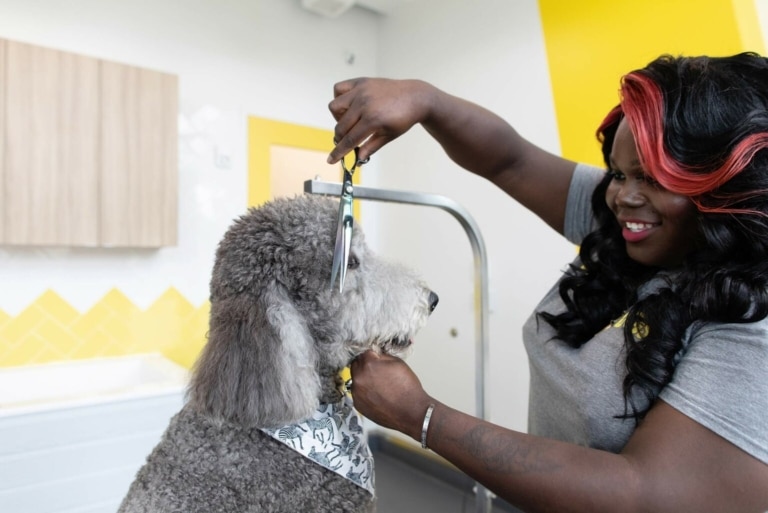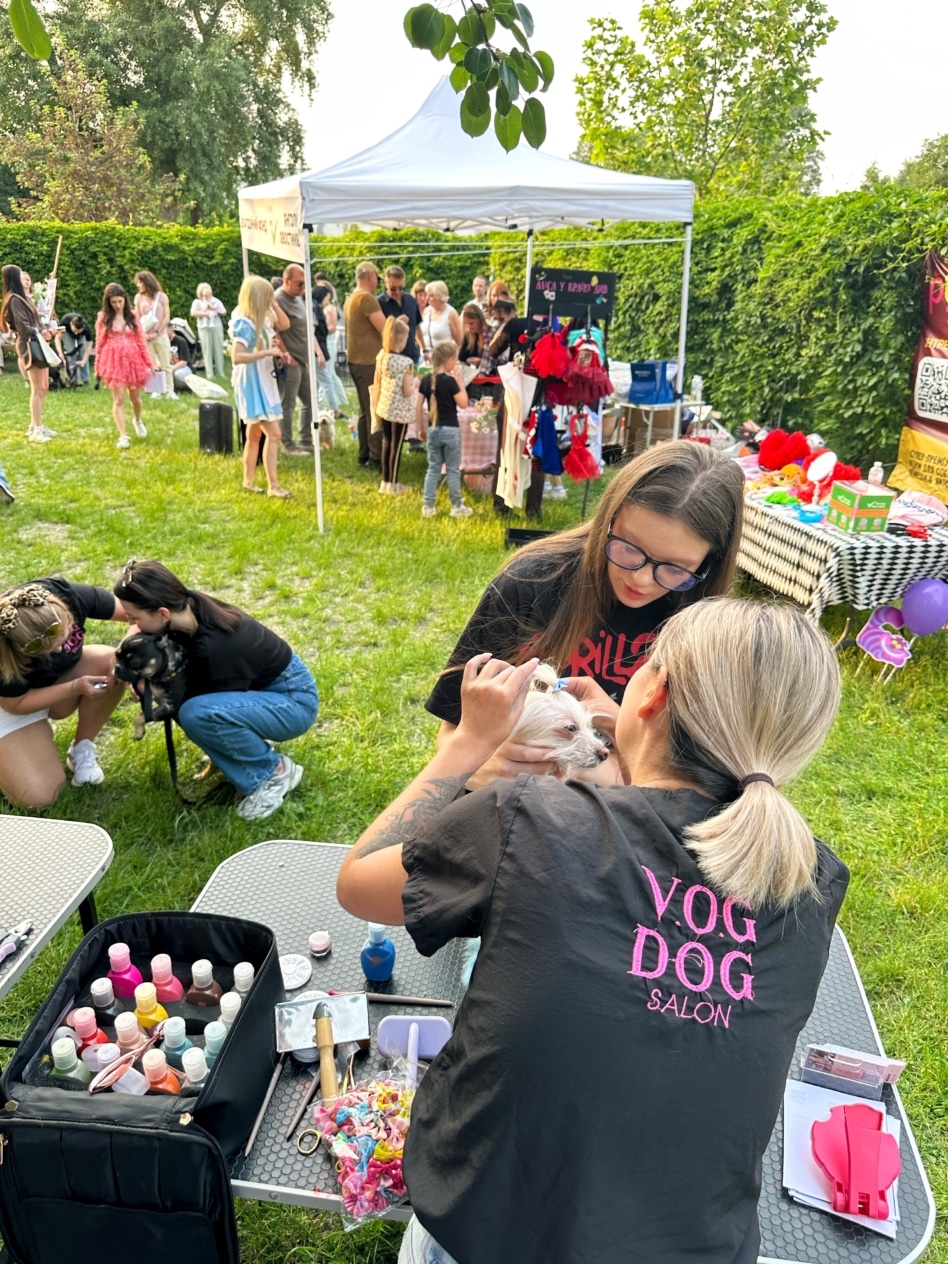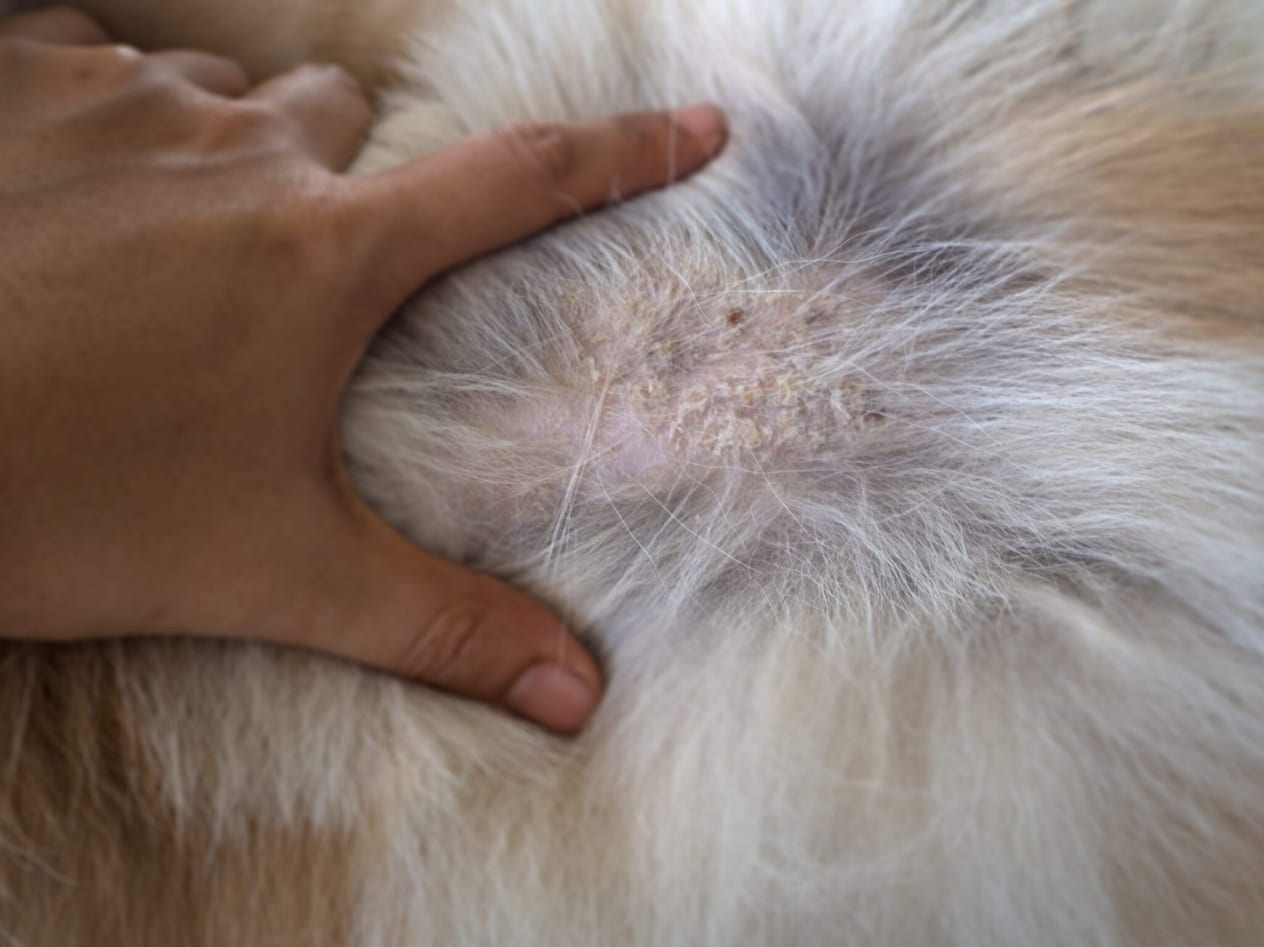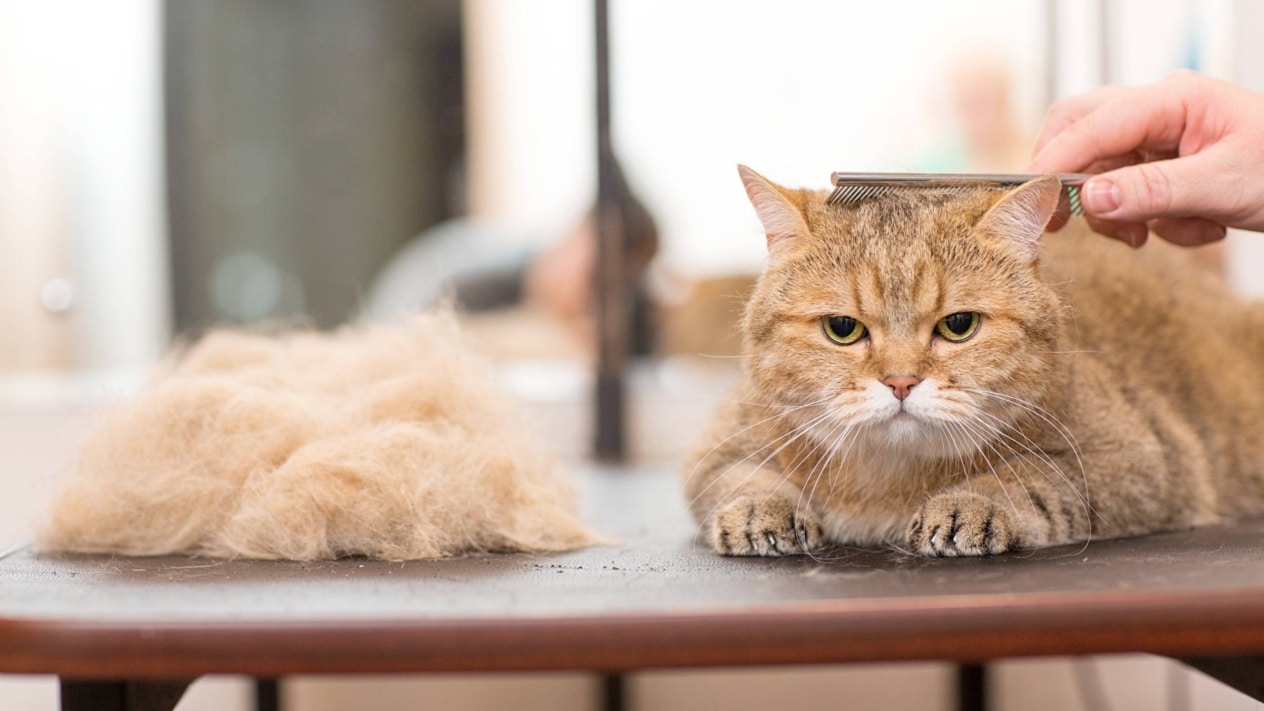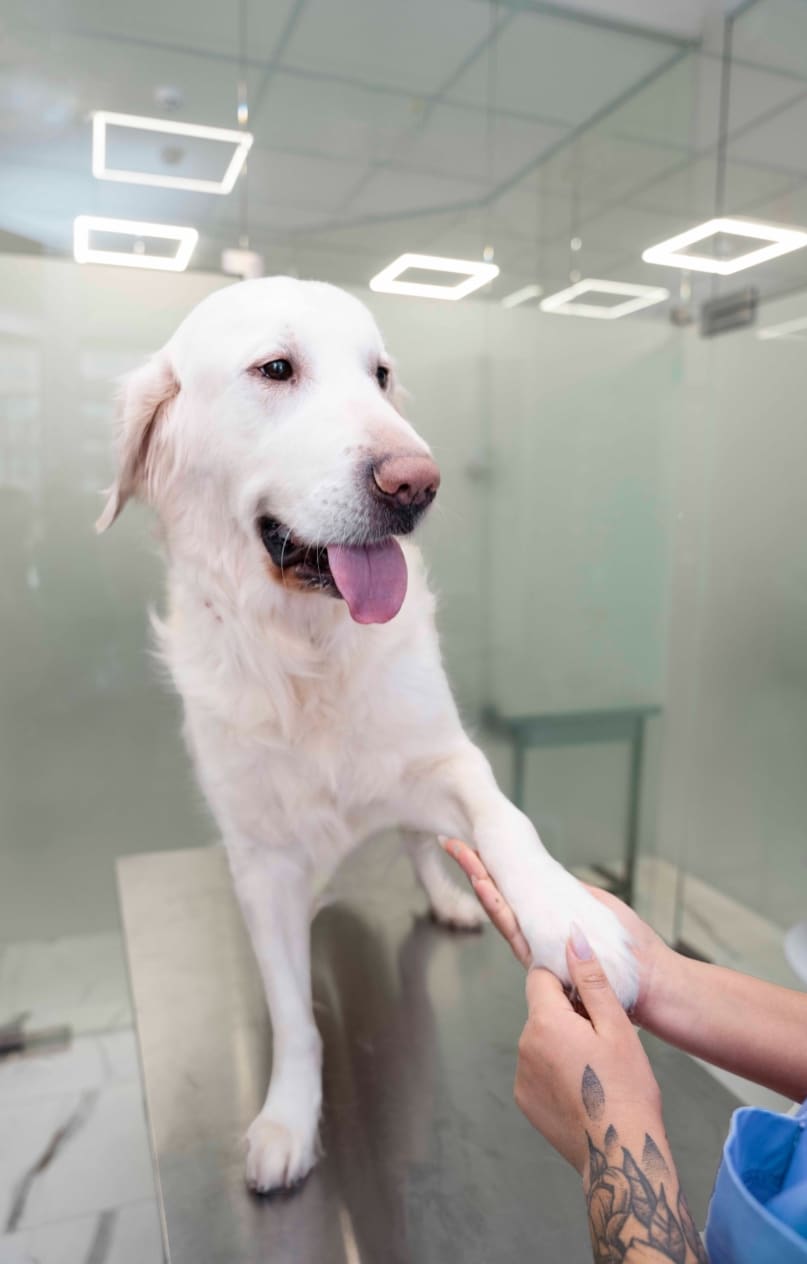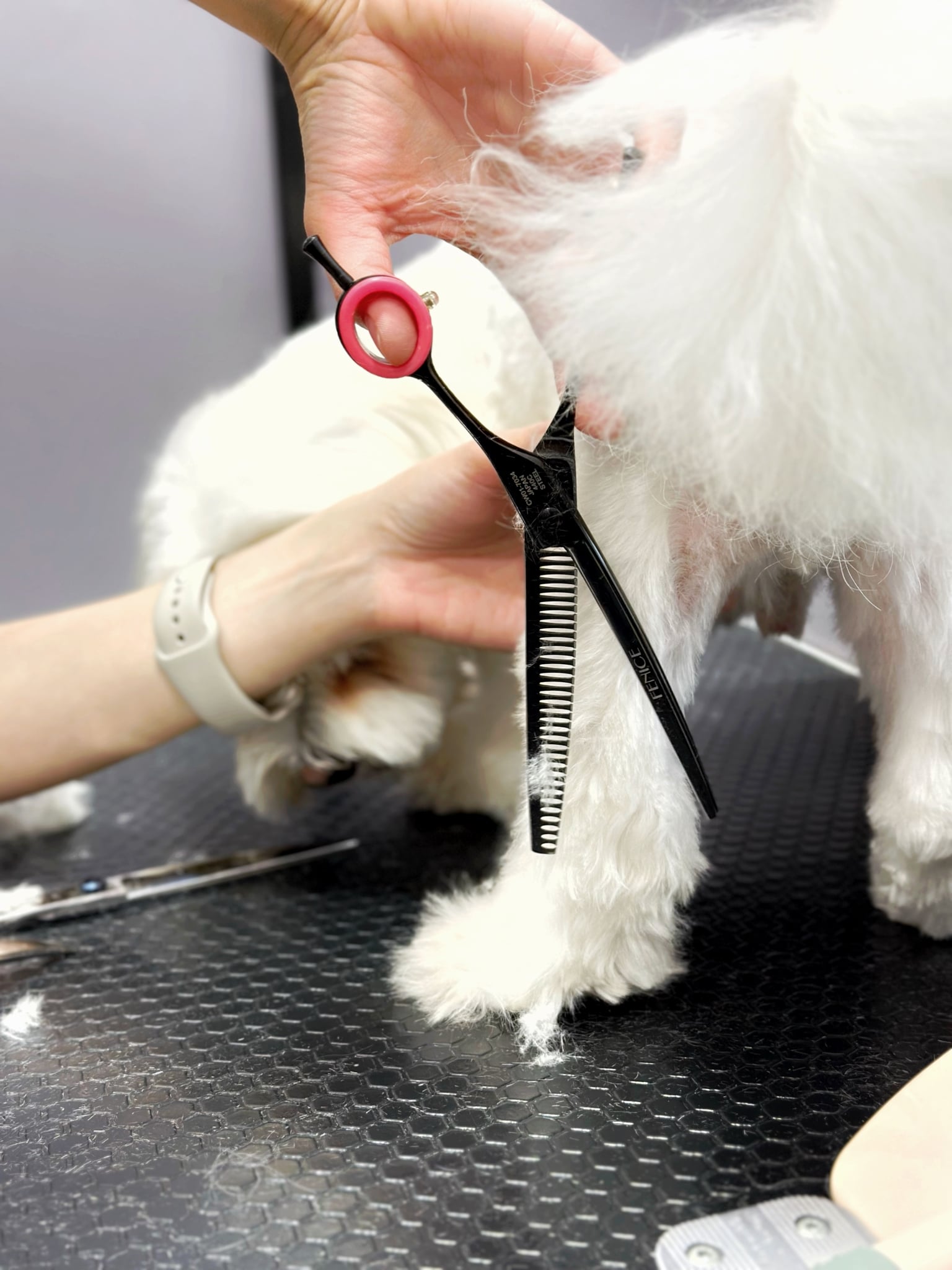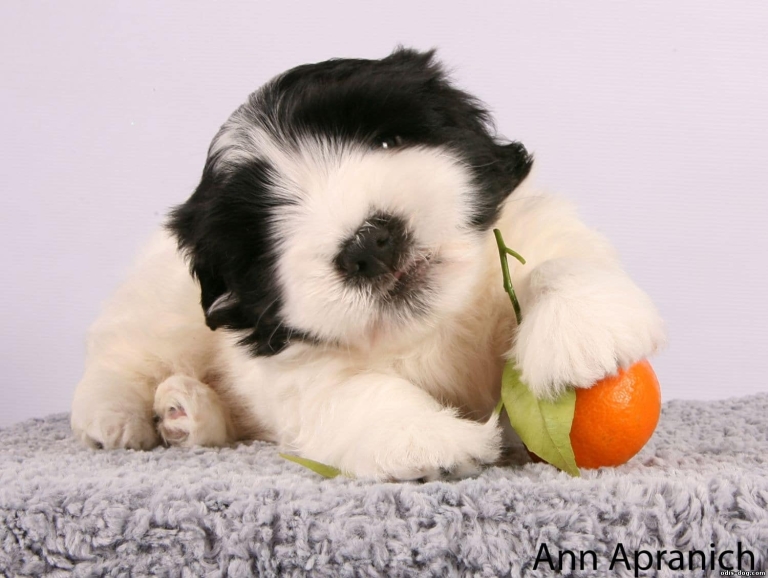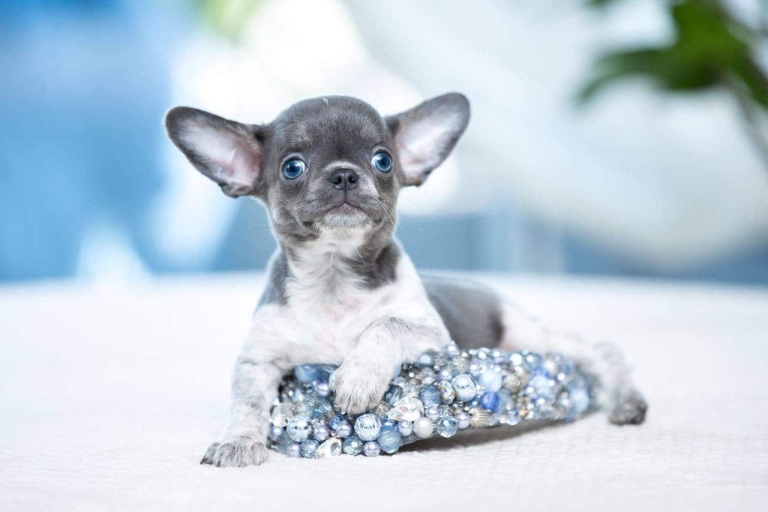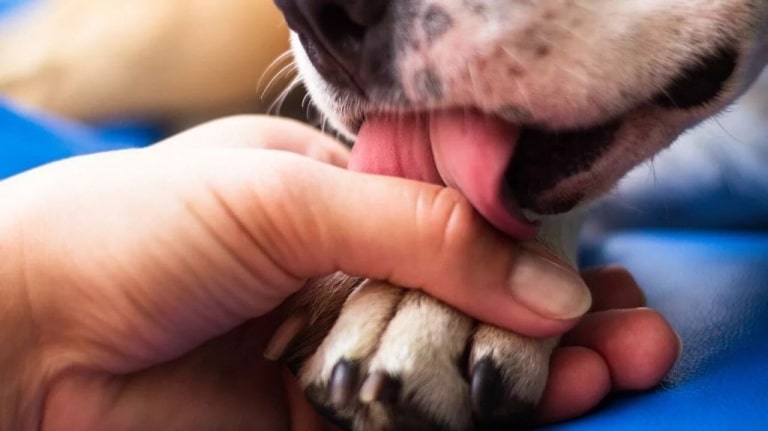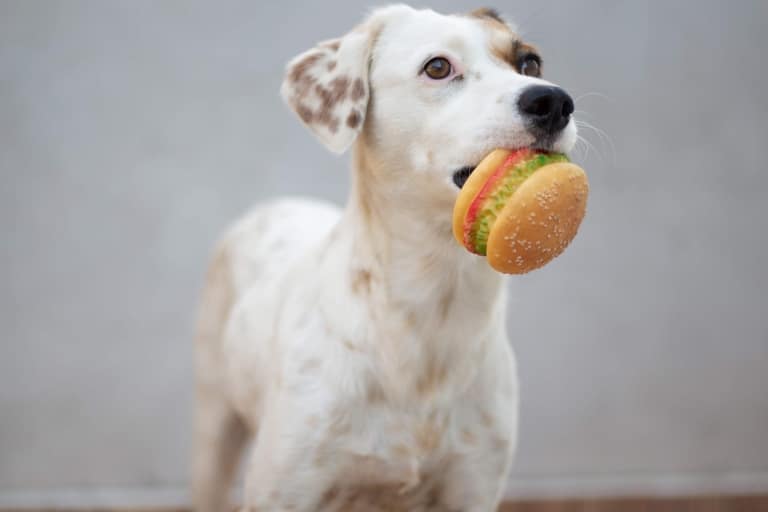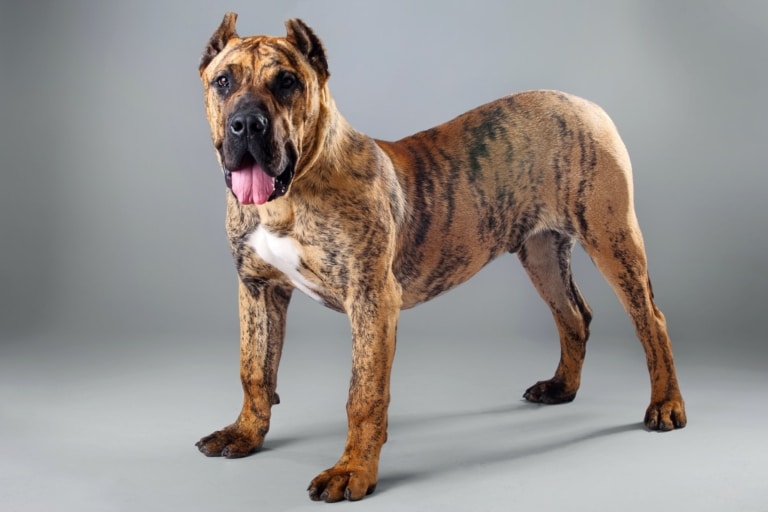The groomer is the first line of detection of pathologies
These days, an experienced groomer is often the first person to notice changes in a dog or cat’s behavior or appearance that could signal the development of disease. During each shearing, bathing, or brushing, it is the groomer who carefully examines the pet’s skin, coat, nails, ears, eyes, and even teeth. Most owners do not have the time or special skills to notice early signs of abnormalities: rashes, dry patches, redness, nodules under the skin, broken teeth, changes in secretions, foul odor or suspicious neoplasms.
It is thanks to the professional groomer’s eye that serious diseases can often be detected at an early stage: dermatitis, fungal infections, parasitic lesions, otitis media, tumors, autoimmune disorders. The groomer does not diagnose, but will always inform the owner of their suspicions and advise them to see a veterinarian. This tandem of veterinary medicine and grooming allows many animals to avoid serious complications, and their owners – to be more attentive to the health of the pet. And it’s also worth remembering that so many groomers graduated from veterinary school or were veterinarians before going into the pet grooming field.
Caring for animals with dermatologic problems
Dermatologic diseases are one of the most difficult challenges for a groomer. Many animals suffer from allergies, eczema, fungal or bacterial infections that are manifested by itching, flaking, rashes, and hair loss. In such cases, the master groomer works closely with the veterinarian, strictly adheres to specific protocols and uses only hypoallergenic, therapeutic or doctor-prescribed products.
Skin and coat care for animals with dermatological problems requires special care: mild shampoos, minimum mechanical impact, maximum delicate combing, short stay in water. The groomer makes sure not to traumatize the affected areas, not to allow wounds to become infected, not to cause additional stress to the animal. Often it is the master who notices the dynamics: whether the skin condition improves after the course of treatment, or new problems appear, and immediately advises the owner to adjust the care together with the doctor. Grooming in such cases becomes part of therapy and prevention of complications.
The peculiarities of haircutting in old or sick animals
Grooming elderly or sick animals is a real challenge for the master, requiring the utmost care, delicacy and a special approach. With age or under the influence of diseases in animals immunity decreases, skin condition worsens, coat becomes thinner, often appear benign or malignant neoplasms, joint pain, cardiovascular problems. The groomer takes these nuances into account: the haircut lasts less time, a quiet, light technique is used, strong pulling or irritation of the skin is excluded. Additionally, it is important to avoid hypothermia, high humidity and stress for older or weakened animals. A shorter coat allows for better skin control, quicker noticing of changes, and easier grooming at home.
Post-surgical grooming – how to groom properly
Animals after operations – castration, sterilization, removal of tumors, trauma – need special attention. During this period it is very important not to do any harm: the groomer uses only sterile tools, carefully bypasses stitches, scars, does not perform any actions that may cause pain or discomfort. The groomer works with protective gloves, consults with the doctor if necessary, chooses hygienic procedures (gentle washing of paws, ear treatment, cleaning of hair near wounds), and categorically avoids any aggressive means. Post-operative grooming allows you to notice complications, inflammation, fluid leakage or other alarming symptoms more quickly, and thanks to this – promptly contact a veterinarian.
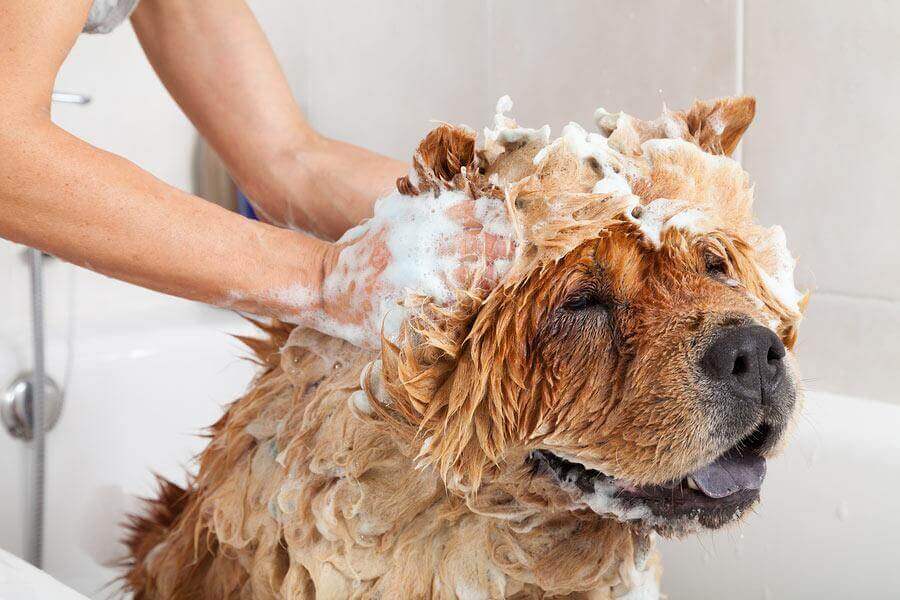
Hygiene procedures that affect the overall condition of the animal
Regular hygiene procedures – bathing, ear cleaning, nail clipping, dental care, paw washing, gently combing – have a direct impact on the Tail’s health. Professional grooming reduces the risk of infections, irritations, dermatitis, parasitic lesions. Clean ears are the key to preventing otitis media, claw clipping protects against injuries and gait disorders, regular combing stimulates blood circulation, and hygienic hair trimming helps to avoid tangles and skin irritations. Thus, grooming is the prevention of diseases, control over the overall condition and the ability to quickly notice the slightest changes in health.
Conclusion
Grooming is closely intertwined with veterinary medicine and is an important tool for early detection of pathologies, care of special, old or post-operative animals. It is professional grooming that cares for the life and longevity of the animal, which confirms: beauty always begins with health.

